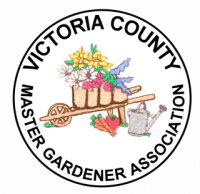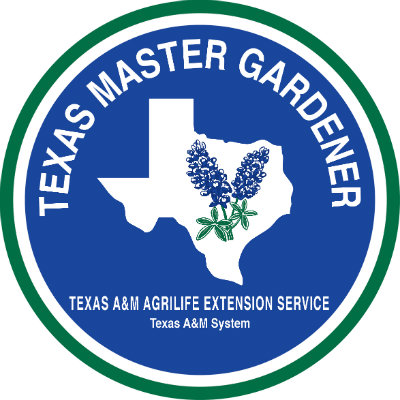

by Michelle Mudd, Victoria County Master Gardener Intern
Edited by
Charla Borchers Leon, Victoria County Master Gardener



LEFT:
A soaker hose is placed at the base of plants in a garden and waters according to a timer. This provides a consistent watering pattern for longer periods of time and keeps the ground moist with plants watered.
TOP RIGHT:
This version of a cost-effective aquatic soaker can be hand-made as described in this article. Moisture is supplied to the soil as it dries and shrinks around the bottle with water draining from the bottle into the ground.
BOTTOM RIGHT:
Harvesting rainwater from a gutter or roof into a watering barrel is another cost-effective method.
We, in fact, were feeling the high temperatures toward the end of spring this year.
So, before you retire your garden hat and gloves, let me help to inspire you to keep those vegetables growing and keep the bountiful harvest of fresh vegetables coming into your household to enjoy.
The tips I am going to share with you will help in maintaining your summer vegetable garden without it being such a daunting task.
Importance of water
As with any living plant or creature, water is a key element in producing a healthy and thriving summer vegetable garden. Most vegetable plants require 1 inch of water per week to wet the soil to a depth of 6 inches. Light or sandy soils require more frequent watering than heavier, dark soils. When the soil feels dry to your touch at an inch or two into the ground, it is time to water. If your plants are planted on mounds, you will want to create a moat or trench around each plant so the excess water has a place to go.
Deep vs. shallow - A deep watering at the base of the plant is more beneficial than a shallow watering after your plants are established. The only time it is beneficial for many short waterings is when you are trying to germinate seeds. Then, after seeds are established, you should then migrate to longer more infrequent watering, which encourages root growth and strength. Most plants do not take kindly to wet leaves as this may induce blight or leaf scorch.
Time of day to water - The best time of day to water a summer vegetable garden is in the morning, preferably before or by 9 a.m. If the climate you live in is dry, such as ours in South Texas, you will want to implement watering in the evening as well. No matter where any of us live, do not water in the heat of the day. I can't express this watering tip enough. Even if you forgot to water in the morning, you can make it up to your plants when you water later that evening.
Types of watering devices
Drip system - Other types of watering devices besides your hose or sprayer would be the installation of a drip irrigation system, which is scheduled by a timer. Benefits of a drip system include plants receiving more water applied directly to the plant feeding system with maintenance of optimal soil moisture, and less possibility of disease and scorch with water not splashing the leaves of plants.
Soaker hose - A soaker hose is a commonly used device, which is installed by laying the hose at the base of the plants and weaving the hose on the plant rows. They are best used with timers for on/off control and provide a consistent watering pattern for longer periods of time while soaking the ground and watering plants.
Cost-effective devices
Hand-made soaker - There are two more watering devices you can make yourself and at the same time will conserve energy and, most importantly, save the money in your wallet.
The first is a hand-made soaker, which is excellent for your deeper-rooted vegetables.
All you need is a clean, 2-liter plastic bottle. Remove outside plastic label. Drill two to three holes using a 3/32-inch drill bit into the cap of the bottle. Then cut off the bottom of the bottle. Place at a 45-degree angle 4 to 6 inches into the ground next to the plant not disturbing the root system and fill with water. As the soil around the bottle dries and shrinks, water will drain from the bottle and replenish moisture to the surrounding soil.
Harvesting rainwater - Another cost-effective watering method is harvesting rainwater simply by placing a barrel with faucet attachment beneath a gutter or any place rainwater runs off your roof. Make sure you do have a lid so no unwanted debris will enter. When you are ready to water, simply attach your garden hose to the barrel faucet and water. Vegetable plants perform well with rainwater, as it does not contain harmful minerals and, in many cases, chemicals.
Mulch to preserve water in garden
Using organic mulch is a great way to preserve water in your garden soil. Types of organic mulch to consider are straw, leaves, compost and peat moss, just to name a few. Mulching 3 to 4 inches will not only keep the soil in your garden moist and cool, it will also help keep the weeds out, as they tend to compete with your summer vegetable plants for nutrients and water.
Whether you are a beginner or seasoned gardener, incorporating these few basic tips will help in producing a plentiful harvest for your family to enjoy all summer long.
• Drip irrigation
• Soaker hoses
• Handmade soaker*
• Rainwater Harvesting Barrel*
* Most cost effective
Remember: Do not water ground surface in the middle of the day.
*******************************************************************
Last Lunch and Learn With the Masters For 2012
• PROGRAM: Composting and mulching presented by Victoria County Master Gardener Ed Gregurek
• WHEN: Noon-1 p.m. Monday
• WHERE: Dr. Pattie Dodson Public Health Center, 2805 N. Navarro St.
• Free to the public
• Bring your lunch and a drink